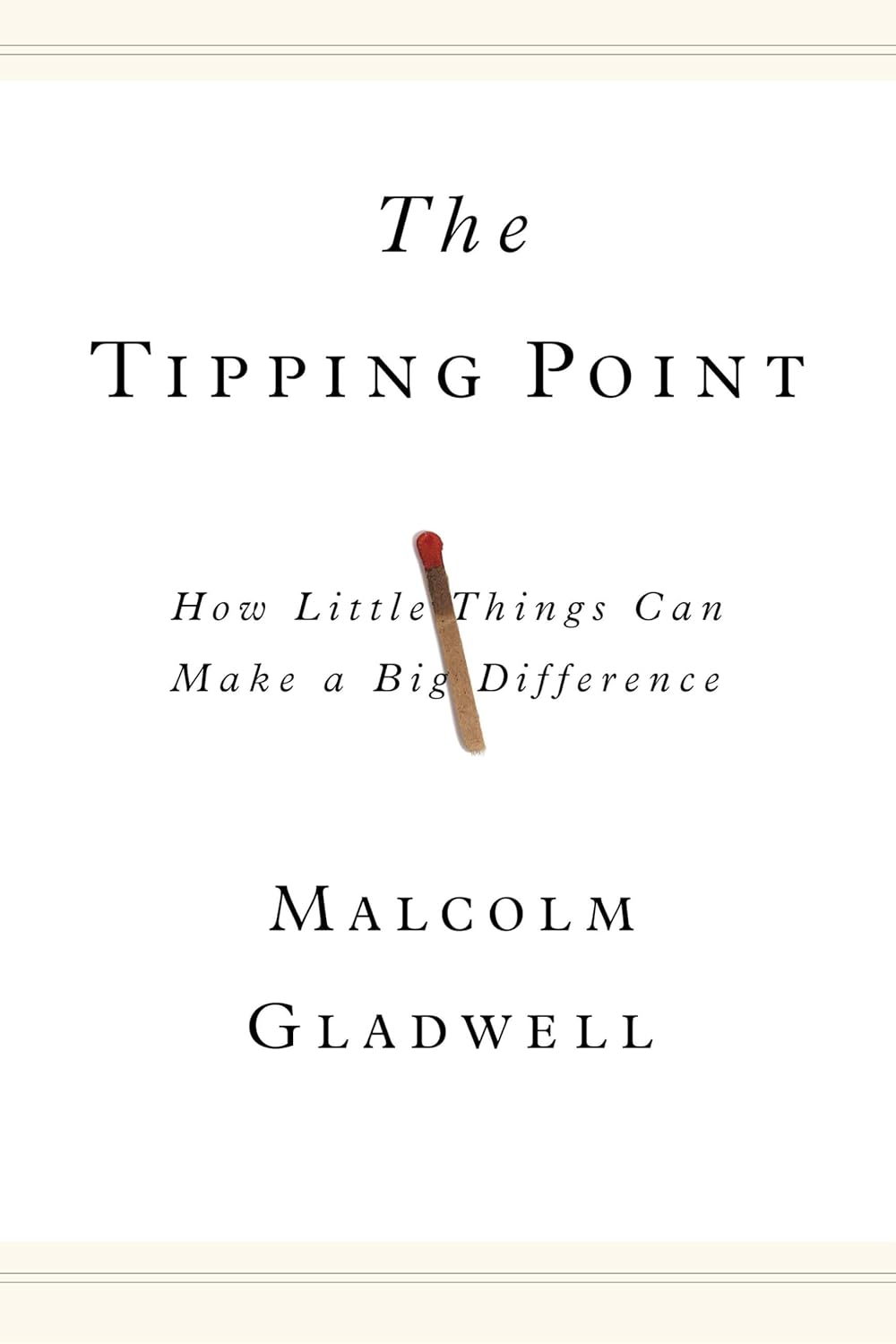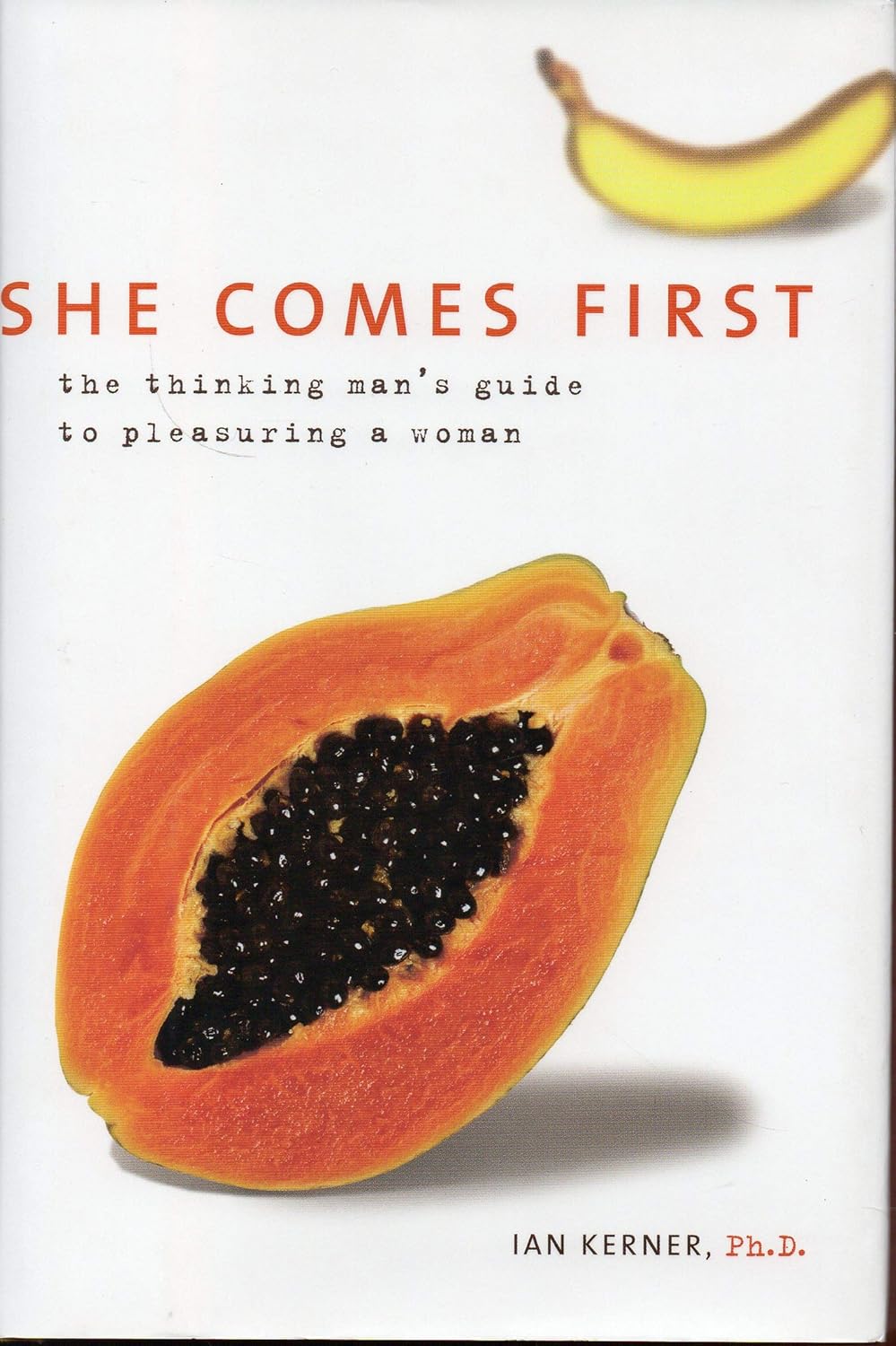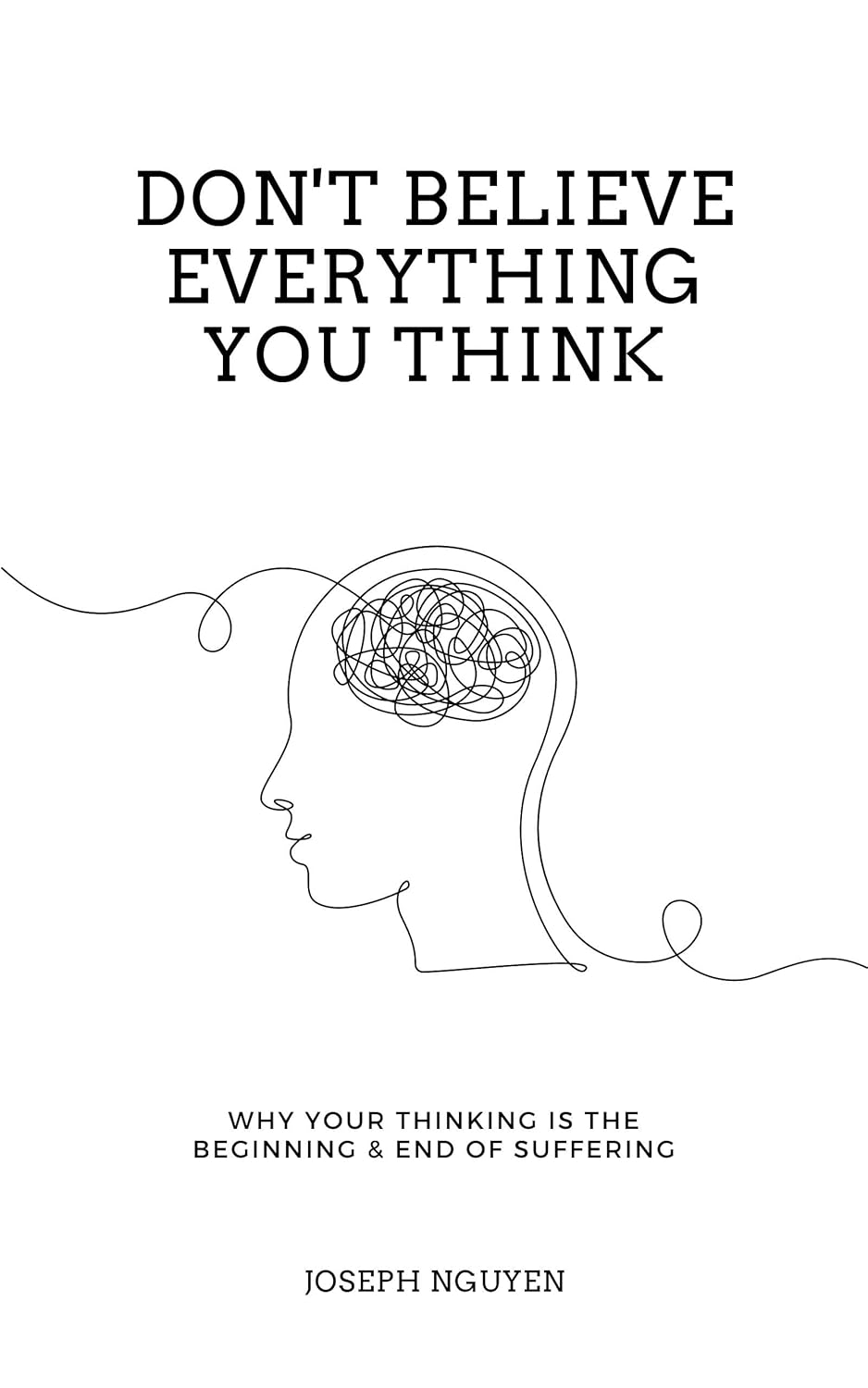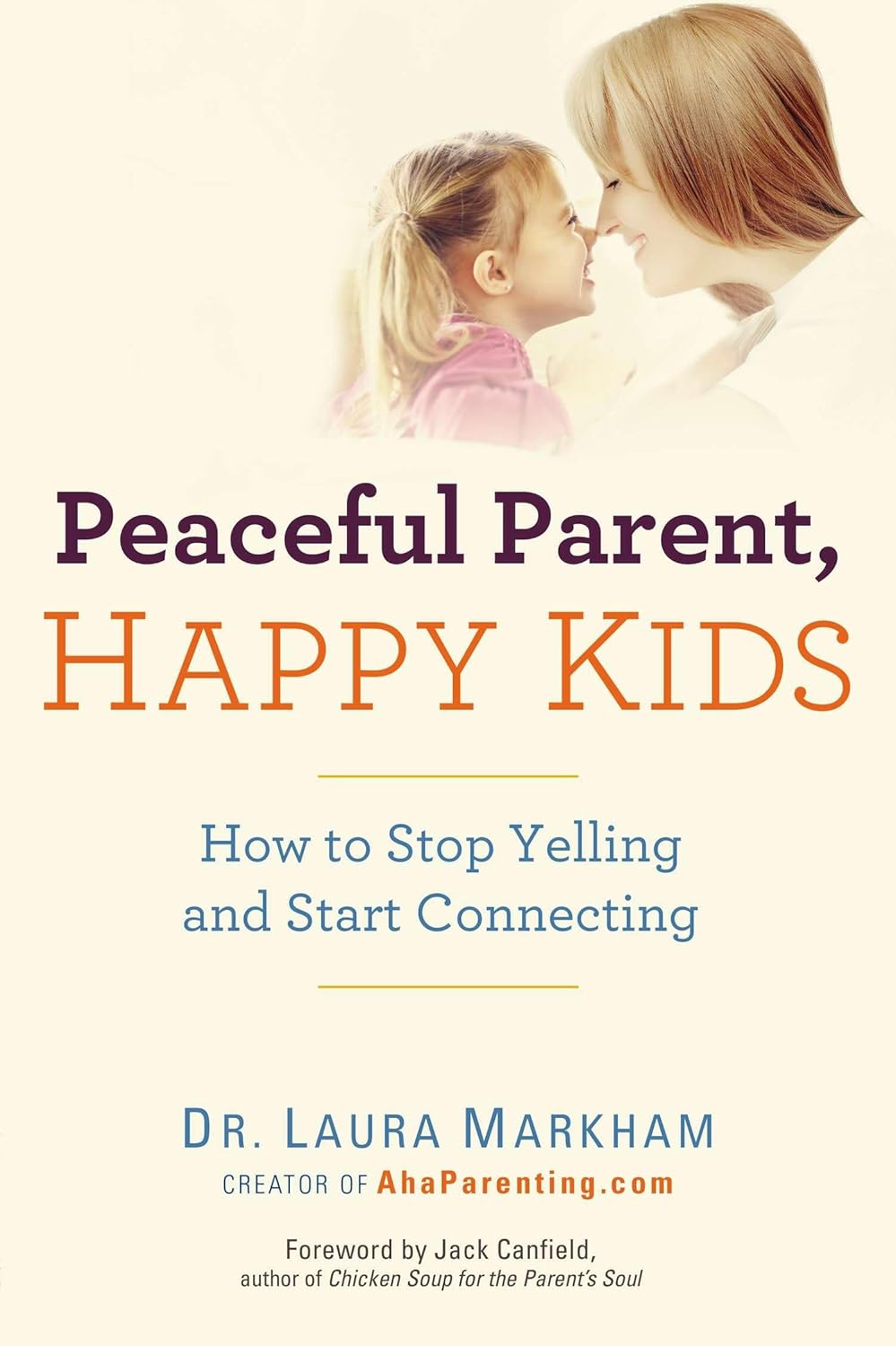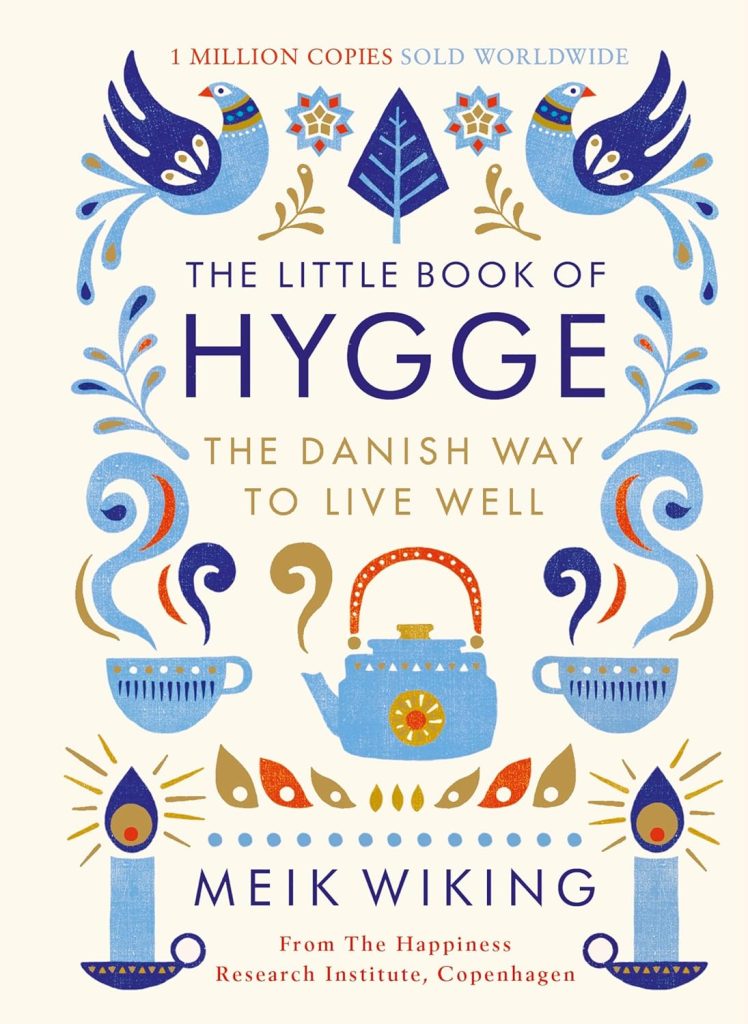
Buy The Book
Chapter
- ✦ Introduction
- ✦ The Key To Happiness?
- ✦ Chapter 1: Light
- ✦ Chapter 2: We Need to Talk About Hygge
- ✦ Chapter 3: Togetherness
- ✦ Chapter 4: Food and Drink
- ✦ Chapter 5: Clothing
- ✦ Chapter 6: Home
- ✦ Chapter 7: Hygge Outside the Home
- ✦ Chapter 8: Hygge All Year Round
- ✦ Chapter 9: Hygge on the Cheap
- ✦ Chapter 10: Hygge Tour of Copenhagen
- ✦ Chapter 11: Christmas
- ✦ Chapter 12: Summer Hygge
- ✦ Chapter 13: Five Dimensions of Hygge
- ✦ Chapter 14: Hygge and Happiness
The Little Book of Hygge: The Danish Way to Live Well

About
Meik Wiking, CEO of the Happiness Research Institute in Copenhagen, explores the Danish concept of “hygge” in “The Little Book of Hygge.” Hygge encompasses a feeling of cozy contentment, well-being, and simple pleasures. The book delves into the various elements that contribute to hygge, such as creating a warm atmosphere with candles and soft lighting, enjoying comforting food and drinks, spending quality time with loved ones, and appreciating the small joys in life.
Wiking provides practical tips and inspiration for incorporating hygge into your daily routine, regardless of where you live. He explores how to design a hygge home, cultivate meaningful relationships, and prioritize activities that bring joy and relaxation. Ultimately, the book serves as a guide to embracing a more mindful and fulfilling lifestyle by focusing on simplicity, connection, and the pursuit of everyday happiness.

Spark
Learn
Review
✦ Introduction
Hygge defies precise translation but centers on cultivating warmth, intimacy, and comfort through shared moments rather than possessions. It’s an atmosphere where guards drop, conversations flow effortlessly, and silence feels companionable. Imagine a snowy cabin evening: friends lounging by a crackling fire, wrapped in woolens, savoring stew and mulled wine. The quiet hum of contentment is interrupted only by a playful remark—*“Could this be any more hygge?”*—to which someone adds, *“Only if a storm raged outside.”* That blend of safety and subtle thrill captures hygge’s essence. It thrives in simplicity—a cup of tea alone, laughter over cake, or the amber glow of candles softening a room. While deeply rooted in Danish culture, hygge transcends borders, resonating wherever people seek refuge from life’s chaos. It’s less about perfection than presence—creating pockets of peace where joy flickers gently, like candlelight against winter’s dark.
✦ The Key To Happiness?
I study what makes people happy at the Happiness Research Institute, where we focus on well-being and quality of life. Our base is in Denmark, one of the happiest nations, which inspires our work. People often ask me why Danes are so happy, despite the weather and high taxes.
The key is our welfare model, which turns wealth into well-being by reducing risks and anxieties. But recently, I’ve realized that “hygge” is also vital to Danish happiness. “Hygge” comes from a Norwegian word meaning “well-being,” reflecting our shared history. Danes connect often with family and friends and feel calm, linking hygge with happiness. There’s growing interest in hygge globally, with journalists and educators exploring it. This book seeks to explain how to create hygge, its link to happiness, and what it truly is.
✦ Chapter 1: Light
Candles are essential for hygge, with 85% of Danes linking them to it. In Danish, a “lyseslukker” (candle extinguisher) signifies a spoilsport, highlighting candle importance. Danes burn more candles per person than any other European country, roughly thirteen pounds of wax each year. This is almost twice as much as Austria. Scented candles are less popular because Danes prefer natural, organic products.
Most Danes light candles almost daily during autumn and winter; consumption triples in December. Advent candles with twenty-four lines mark the countdown to Christmas. May 4, “lysfest” (light party), commemorates the end of the German occupation with candles in windows. Studies reveal candle soot can cause indoor microparticle levels to exceed busy street traffic.
Despite awareness of health implications, Danes consume candles in obscene quantities. Beyond candles, Danes obsess over general lighting. Strategic lamp placement creates soothing light pools, viewing it as an art.
During the dark months, hygge is refined and seen as part of the national identity. Summer is beautiful, but winters are dark. Hygge is the antidote to the cold winter, rainy days, and darkness. Lighting becomes crucial as a survival strategy.
✦ Chapter 2: We Need to Talk About Hygge
Some might say Danish sounds like “German with a hot potato in their mouth,” but it’s rich in hygge descriptions. We use “hygge” and “hyggelig” so much that it might seem excessive to foreigners. We emphasize how hyggelig everything is, all the time, not just in the moment. It’s a key performance indicator for gatherings. Even tough bikers choose bars for their “hygge” factor. Cafés prioritize hygge over price or product.
Danes insist hygge is uniquely Danish, though other cultures have similar concepts. The Dutch have “gezelligheid,” Germans have “Gemütlichkeit,” and Canadians recognize “hominess.” I think it’s that we uniquely use hygge as a verb, as in, “Why don’t you come over and hygge with us tonight?” What freedom is to Americans, thoroughness to Germans, and a stiff upper lip to the British, hygge is to Danes. Because of its importance to Danish culture, the Danish language is rich when describing hygge with compound words.
I don’t think Danes are the only ones who can enjoy the atmosphere, comfort, and pleasure of good company in front of a fire with mulled wine. An English translation of “hygge” as “coziness” may be problematic because it loses important associations. But we can find similar concepts worldwide. “Gezelligheid” to the Dutch is more than just cozy; it goes way beyond. The Dutch tend to use the word “gezellig” in many ways, as when President Obama stated when visiting the Netherlands in 2014, “My first visit to the Netherlands has been truly gezellig.”
✦ Chapter 3: Togetherness
Each year, I and my friends take a ski trip to the Alps. Yes, the skiing’s fun, but the highlight is returning to our cabin afterward. We relax, weary, on the balcony as the Grand Marnier is poured into coffee. We sit together silently, relishing one another’s presence and the mountain air. During my happiness lectures, when I ask people to recall their happiest moments, most picture themselves with others.
Based on my happiness research, social relationships are the strongest predictor of our happiness. How can we foster these relationships? Prioritizing a healthy work-life balance is one answer. The Danish workplace reflects this: people usually leave by 5 PM to spend evenings with family. I schedule meetings to accommodate parents picking up their kids.
While you can hygge alone, it usually happens in small groups of loved ones. Hygge involves relaxed, thoughtful interaction, and a sense of equality. Everyone helps with chores during a hyggelig evening, which fosters warmth and closeness, like a hug without physical touch. Extending your comfort zone to include others is crucial.
Being around people is key for hygge and essential to happiness. Research confirms that strong social bonds are vital for well-being, with studies showing that social connections directly correlate to our overall happiness. The everyday joy of good company also affects happiness levels. Socializing, eating, and relaxing are key elements of hygge and the most enjoyable activities. We need connection and close bonds, which impact our behavior. Therefore, we have to look at our relationships and determine the level of satisfaction.
✦ Chapter 4: Food and Drink
If hygge were a person, I think it would be Alice Waters. She embodies key elements of hygge with her rustic, slow approach, understanding the value of hearty food shared with good company. New Nordic cuisine has gotten recent attention, especially Noma, which has been rated the best restaurant in the world. A dish of live shrimp covered in ants might make headlines, but it’s not everyday Danish food.
High meat, confectionery, and coffee consumption link directly to hygge. It’s about being kind to yourself, giving yourself a treat, and taking a break from healthy living. Sweets, cake, coffee, and hot chocolate are hyggelige. Carrot sticks, not so much. Something sinful is essential, but not fancy, and a hearty stew is better than foie gras. Sharing popcorn from the same bowl is perfect.
A friend’s four-year-old daughter once told me that sweets are what make people happy. Danes love confectionery, associating it with hygge: gummy bears, licorice, and chocolate domes stuffed with cream. Danes consume 18 pounds of confectionery per person annually, second only to Finns, and twice the European average. Cake is also hyggelig, common in our offices.
Cakeman, a large-scale gingerbread man decorated with sweets, Danish flags, and candles, is a popular superhero (sort of) at children’s birthday parties. The birthday kid cuts Cakeman’s throat while others scream—Nordic noir, birthday style. Pastries are also key. Our pastries are called wienerbrød (Vienna bread), because recipes were developed by chefs who had been to Vienna.
Baking at home is a hyggelig activity with friends and family. The more rustic, the more hygge. Sourdough has been a hit, because the process is slow and makes you feel like you are caring for a living thing.
✦ Chapter 5: Clothing
When you come to Denmark, remember casual is key. We like a casual tone, atmosphere, and especially a casual dress code. You won’t see many three-piece suits in Copenhagen; business dress here might seem almost sloppy. However, there’s an art to being both stylish and casual. I myself often go for a T-shirt or sweater with a blazer. I especially like blazers with leather elbow patches – they give off a professor vibe. My friends joke that if they need to find me in a crowded bar, they just look for the elbow patches.
Danish fashion is minimalist, sleek, and elegant, but not uptight. It balances hygge with functional design. A scarf is a must, for both men and women. It’s good for winter, but some people wear them even in summer because they have scarves withdrawal. The bigger the better. So, pile on a stylish, thick scarf, just short of risking a neck injury. Some Brits call the Danish TV drama “Borgen” “Scarf Watch” because the actors are always wearing scarves.
When you leave the Copenhagen airport, you might think you’ve walked onto a ninja movie set. Everyone wears black in Denmark. Dress like you’re going to Karl Lagerfeld’s funeral: stylish, but monochrome. In summer, you can get away with gray. A hand-knitted wool sweater or cardigan with black leggings (for women) or skinny jeans (for men) strikes a balance between hygge and fashion.
The Sarah Lund sweater from “The Killing” is iconic. The actress, Sofie Gråbøl, chose it because it showed that her character was confident and didn’t need a suit. She found peace with herself, and it reminded the actress of her childhood and hippie parents who wore similar sweaters and believed in togetherness.
✦ Chapter 6: Home
People abroad call Danish TV dramas “furniture porn” because most scenes are filmed in homes decorated with Danish design classics. Walking into many Danish homes feels like stepping into an interior design magazine. Our homes are the hygge headquarters and central to our social lives. To avoid expensive restaurants, seven in ten Danes experience most hygge at home, so we put effort and money into making our homes hyggelige.
I once spent my entire salary on the Shell Chair, designed by Hans J. Wegner but burglars stole it. Perhaps Danish design obsession is best shown by the Kähler Vase Scandal. Over 16,000 Danes tried buying the limited edition vase online; the website crashed, and people queued outside stores.
Every home needs a hyggekrog, a nook to snuggle in with a blanket, book, and tea. Mine is by the kitchen window. We love comfy spaces and the real estate agents even use a hyggekrog to sell houses. A hyggekrog may make us feel safe.
Also, a fireplace may be the ultimate hygge headquarters. It’s somewhere we sit alone to rest and experience coziness, and somewhere we spend time with loved ones to intensify togetherness. We use candles and wooden things. Danes feel the need to bring the entire forest inside with leaves, nuts, twigs, and animal skins.
✦ Chapter 7: Hygge Outside the Home
As a scientist, I look for patterns. When we look at hyggelige moments, we find some common denominators: company, casualness, closeness to nature, and being in the present.
You can hygge alone. Snuggling under a blanket with a favorite TV show on a rainy Sunday or watching a thunderstorm with red wine is hyggelig. But the most hyggelige moments happen with others. My dad and his brothers rented a summer cabin on Denmark’s west coast, surrounded by dunes and wind. We spent a weekend eating, drinking, talking, and walking on the beach. I think that was my most hyggelig weekend that year.
Most hyggelige moments are built on casualness. You and your guests need to relax; formality is unnecessary. Be yourself. When I was in my twenties, I helped harvest grapes in Champagne. Years later, I visited with friends and we stopped by the vineyard. We spent a hyggelig afternoon with Glennie, the owner, and her son, drinking wine in their rustic kitchen. Despite the years, there was no need for formality.
Whether by a Swedish river, a French vineyard, your garden, or a park, nature lets you relax. We aren’t juggling options or glued to screens. There are no luxuries, just good company and conversation. Simple, slow, rustic elements lead to hygge.
One summer, I camped with friends by Sweden’s Nissan River. We roasted chickens over the fire, listening to sizzling potatoes wrapped in foil. Tired from canoeing, we watched darkness fall. The fire lit the trees with warm colors, and we saw stars. Drinking whiskey from coffee mugs, we were silent, tired, and happy – pure hygge. Being present in those moments also matters and means embracing and savoring the present moment.
✦ Chapter 8: Hygge All Year Round
We say in Denmark, “There is no bad weather, only bad clothing.” But, honestly, the weather here isn’t great. Some call it dark, windy, and damp or that we have two winters, one gray and one green. With that weather, Danes spend most of their time indoors in the winter, but enjoy the sun as much as possible in summer. So autumn and winter are hygge high season, according to my research.
In January, a casual movie night is perfect. Have everyone bring snacks and pick an old classic for easy chatting during the film. Make a game of summarizing the plot in the shortest way possible. In February, plan a ski trip with friends. The magic is relaxing together in the cabin, tired from the slopes. Remember the Grand Marnier.
If you’re vacationing in Spain in the summer, explore the country beforehand during March. Watch Spanish movies, cook tapas, and put Spanish labels on household objects. If vacation isn’t in the cards this year, bring your dream destination home. In April, hiking, camping, or canoeing is ideal. Pack woolen socks and remember, that the point of this trip is not the Wi-Fi, and enjoy an open fire and whiskey under the stars.
May is time for rustic cabin weekends. Pack board games for rainy days and plan a barbecue, because a beer around the grill is peak summer hygge. In early June, make elderflower cordial. Also, on St John’s Eve, which falls on June 23, celebrate the summer solstice with a bonfire and picnic. It’s a bittersweet time as we start the descent into darkness, so it is important to celebrate it. Enjoy the long summer days.
✦ Chapter 9: Hygge on the Cheap
Hygge doesn’t need to be expensive, it can be achieved on a budget. Buying less can lead to a better life. We are often stressed, but by saving money we can have more flexibility.
The simplest and most obvious way to make hygge cheaper is to invite people over instead of going out. Having friends over requires less money than meeting them at bars or restaurants and creates a cozy environment that will keep both the wallet and your hearts warm. I know a couple of people that go to restaurants every day in Copenhagen, which costs them between 1,500 and 3,000 dollars.
Borrow or rent instead of buying. Having one good relationship that allows borrowing is a form of hygge itself. It gives the opportunity to develop friendships. If you need to borrow more often than once a year then you should consider whether to buy or not. If you are good in the kitchen and can make something such as jam, people will give you everything. I make limoncello, and people leave lemons outside my door, so I do not have to pay.
It has been shown that we are better off buying experiences than material things. It has been shown that we should spend our money on experiences such as a summer vacation or a concert instead of buying a new car. It is in our memories, and it is more hyggelig to do so.
✦ Chapter 10: Hygge Tour of Copenhagen
If you are going to Copenhagen, I recommend starting at the airport, because even the airport can be hyggelig, if you use the wooden escalator. When you come to Copenhagen it is like going back to your grandparents house where you can lay back and relax and be in the mood for hygge.
First, stroll through the King’s Garden, built in the 1600s. It is hyggelig and historical. From there, walk towards the harbor to see Nyhavn, built by King Christian V in the 1670s. The buildings are from the 17th and 18th centuries. The writer Hans Christian Andersen lived here for years, and there is something magic about the street. Take a canal tour of Copenhagen from Nyhavn.
After the canal tour, visit Christianshavn for an alternative Copenhagen experience. Like Amsterdam, Christianshavn has canals and houseboats. It’s different from the rest of Copenhagen, with a relaxed atmosphere. You’ll find Christiania here, a freetown with about 850 residents and known for pusher street. Enjoy this unique experience, however Christiania is not for everyone.
Take a break at The Coffee Collective, with several locations in Copenhagen; try the Godthåbsvej location. The owner, Klaus Thomsen, was world barista champion. He searches the world for coffee beans, and you can go there for your caffeinated hygge.
After coffee, visit Tivoli Gardens. Some find it touristy, but it embodies hygge. Walt Disney even visited Tivoli for inspiration before building Disneyland. During the day, you will find families. However, in the evening, it shifts to young adults on dates.
✦ Chapter 11: Christmas
While you can enjoy hygge all year, Christmas is the super-league final of hygge. I love Christmas. For Danes, Christmas embodies tradition and a sense of home. In early December, our family gets together to make Christmas decorations, listening to Christmas music, eating biscuits, and drinking gløgg. We trim the tree on December 23rd.
In the weeks before Christmas, towns have Christmas markets. You can always get gløgg at one. Most families decorate with advent wreaths. We light one candle each Sunday in Advent until Christmas. We also have advent calendars that offer treats for each of December’s first 24 days. December has a calendar candle marked with the numbers 1 to 24 so we can count down.
The 24th of December is the big day. Most Danes attend church, and around six PM we eat dinner. Roast duck, pork, or goose are common with potatoes, gravy, and red cabbage. We also eat risalamande (rice pudding) with hot cherry sauce. An almond is hidden, and whoever finds it wins a prize. After dinner, we hold hands and walk around the Christmas tree, singing carols.
We open gifts after singing. Kids love the presents, but my favorite part is the feeling of warmth and togetherness, family history, and being present. It’s our cultural identity.
The 25th and 26th are spent relaxing with family. I love the whole season. I embrace and extend the tradition, because tradition makes sense. It’s a time for hygge.
✦ Chapter 12: Summer Hygge
July is when we Danes love to get out and enjoy nature. The weather is warm, and the evenings are long. Now is the perfect time to pack a picnic basket and explore hidden spots. I recommend finding a spot with a nice view, a forest glade, a meadow, or on the beach. There is nothing better than enjoying a meal outdoors with friends and family.
August is the time for summer festivals. In August, the town of Skanderborg holds the Smukfest Music Festival in the forest, and I have to admit that I love that the festival and has a high hygge factor with 40,000 people.
September means gathering kindling. Soon, the colder, darker months arrive, and it’s time to collect firewood. Find an ax and get the wood chopped. This might also mean gathering nuts and berries. Enjoy nature’s bounty.
If I were to pick a month to move to Copenhagen, it would be October. It is rainy and windy, but Copenhagen has an abundance of things to do inside, including museums.
November is when the Christmas decorations start appearing in shops. In our family, we get ready for Christmas in November. I’m not sure why we get started so early. Perhaps we Danes know how dark the winter will be.
✦ Chapter 13: Five Dimensions of Hygge
Hygge isn’t just a word—it’s a feeling woven from five core elements that shape how we experience coziness and connection. These dimensions work together to create moments of warmth and contentment, whether alone or with others.
**Atmosphere**
Dim the lights. Soft, warm lighting—candles, lamps, or sunset hues—sets the stage. Harsh fluorescents are hygge’s enemy. Think flickering flames, muted tones, and spaces that feel like a gentle embrace.
**Presence**
Be here now. Put away phones, mute notifications, and sink into the moment. Hygge thrives when we’re fully engaged—whether savoring a meal, listening to rain, or sharing stories. It’s about mindfulness without the pressure to perform.
**Pleasure**
Indulge in small joys. Hot chocolate with whipped cream, freshly baked bread, or a square of dark chocolate. Hygge celebrates the ordinary made special, not extravagance. It’s permission to enjoy life’s simple, sensory delights guilt-free.
**Togetherness**
Hygge is shared. It’s the comfort of quiet companionship, laughter with friends, or a family board game night. The focus isn’t on grand gestures but on the ease of being with people who make you feel safe and accepted. Small groups often work best—enough to connect, not so many that it frays into chaos.
**Equality**
“We” over “me.” Everyone contributes, whether chopping veggies for stew or tidying up post-dinner. No hierarchies—just shared effort and mutual respect. Conversations flow freely, stories are exchanged, and no one dominates. It’s about balance, where everyone feels valued and heard.
Together, these elements create a sanctuary from life’s pressures. Hygge isn’t about perfection; it’s about cultivating pockets of peace where warmth, authenticity, and gratitude take center stage. Whether through a candlelit bath, a picnic in the park, or a cozy night in with loved ones, it’s the art of turning everyday moments into something nourishing and whole.
✦ Chapter 14: Hygge and Happiness
If you are going to Copenhagen, I recommend starting at the airport, because even the airport can be hyggelig, if you use the wooden escalator. When you come to Copenhagen it is like going back to your grandparents house where you can lay back and relax and be in the mood for hygge.
First, stroll through the King’s Garden, built in the 1600s. It is hyggelig and historical. From there, walk towards the harbor to see Nyhavn, built by King Christian V in the 1670s. The buildings are from the 17th and 18th centuries. The writer Hans Christian Andersen lived here for years, and there is something magic about the street. Take a canal tour of Copenhagen from Nyhavn.
After the canal tour, visit Christianshavn for an alternative Copenhagen experience. Like Amsterdam, Christianshavn has canals and houseboats. It’s different from the rest of Copenhagen, with a relaxed atmosphere. You’ll find Christiania here, a freetown with about 850 residents and known for pusher street. Enjoy this unique experience, however Christiania is not for everyone.
Take a break at The Coffee Collective, with several locations in Copenhagen; try the Godthåbsvej location. The owner, Klaus Thomsen, was world barista champion. He searches the world for coffee beans, and you can go there for your caffeinated hygge.
After coffee, visit Tivoli Gardens. Some find it touristy, but it embodies hygge. Walt Disney even visited Tivoli for inspiration before building Disneyland. During the day, you will find families. However, in the evening, it shifts to young adults on dates.
For People
– Design enthusiasts
– Stressed professionals
– Home makers
– People seeking cozy lifestyle
– People interested in Scandinavian culture
Learn to
– Creating cozy atmosphere
– Prioritizing well-being
– Embracing simplicity
– Slowing down
– Connecting with others





